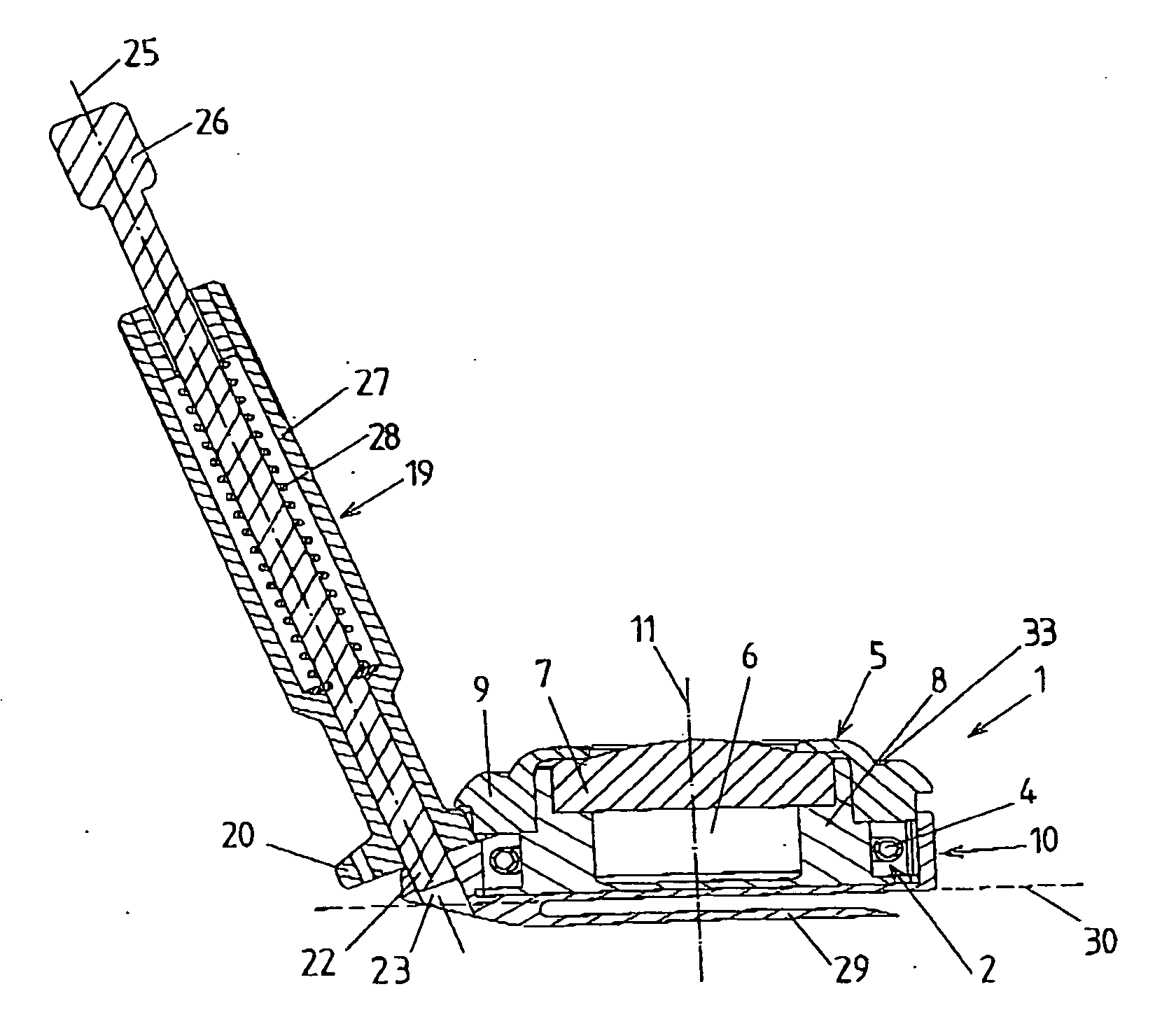Portkatheter
a port catheter and catheter technology, applied in the field of port catheters, can solve the problems of corresponding infection risk through the implanted port catheter, the shortening of the tube to the correct length, and the shortening of the tube and the joining of the shortened tube with the connection piece requires intensive manipulation of the parts of the port catheter, so as to improve the sterility of the port catheter
- Summary
- Abstract
- Description
- Claims
- Application Information
AI Technical Summary
Benefits of technology
Problems solved by technology
Method used
Image
Examples
Embodiment Construction
[0028]An embodiment of a port catheter according to the invention, which can also be referred to as an infusion port, is shown in the Figures. The port catheter comprises a port unit 1 and a catheter tube 2 connected with a connection end on the port unit 1. At its delivery end 3 opposite its connection end, a fluid flowing through the inner channel 4 of the tube 2 can be introduced into a hollow organ of a human or animal body after the port catheter has been implanted into the human or animal body.
[0029]The port unit 1 includes a cup 5 with an interior chamber 6 into which the fluid to be introduced into the hollow organ is to be placed. For this purpose, a diaphragm 7 delimiting a section of the interior chamber 6 can be pierced by an injection needle in order to inject the fluid into the chamber 6. After the injection needle is withdrawn, the puncture opening of diaphragm 7 closes again due to the elasticity of the material of diaphragm 7, which can be comprised, in particular, ...
PUM
 Login to View More
Login to View More Abstract
Description
Claims
Application Information
 Login to View More
Login to View More - R&D
- Intellectual Property
- Life Sciences
- Materials
- Tech Scout
- Unparalleled Data Quality
- Higher Quality Content
- 60% Fewer Hallucinations
Browse by: Latest US Patents, China's latest patents, Technical Efficacy Thesaurus, Application Domain, Technology Topic, Popular Technical Reports.
© 2025 PatSnap. All rights reserved.Legal|Privacy policy|Modern Slavery Act Transparency Statement|Sitemap|About US| Contact US: help@patsnap.com



